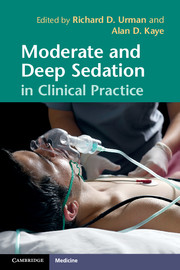
- Cited by 3
-
Cited byCrossref Citations
This Book has been cited by the following publications. This list is generated based on data provided by Crossref.
UEKI, Ryusuke HORITA, Makiyo KOMASAWA, Nobuyasu KOHNO, Kohichi FUJIMOTO, Yoko and KAMINOH, Yoshiroh 2014. A Sedation Course and Curriculum for Operating Room Nurses. THE JOURNAL OF JAPAN SOCIETY FOR CLINICAL ANESTHESIA, Vol. 34, Issue. 2, p. 269.
UESHIMA, Hironobu MORIMOTO, Yasuhiro ATAGI, Kazuaki KOMASAWA, Nobuyasu ARIYAMA, Jun and KITAMURA, Akira 2014. Can We Develop a Simulation-Based Sedation Training Course for Peripheral Nerve Block?. THE JOURNAL OF JAPAN SOCIETY FOR CLINICAL ANESTHESIA, Vol. 34, Issue. 2, p. 264.
van Luijtelaar, Erik and Zeeman, Dick 2023. De anesthesiemedewerker. p. 221.
- Publisher:
- Cambridge University Press
- Online publication date:
- March 2012
- Print publication year:
- 2012
- Online ISBN:
- 9781139084000


